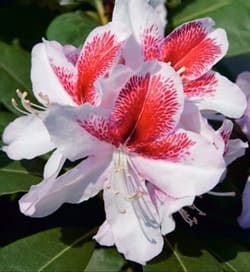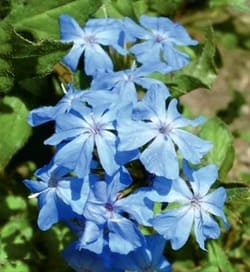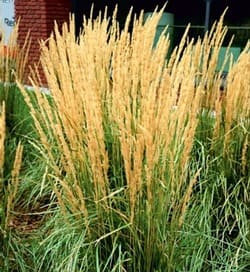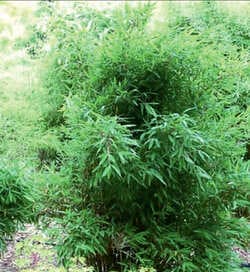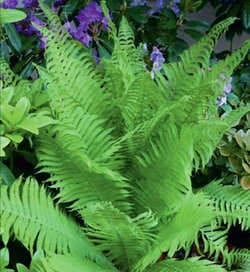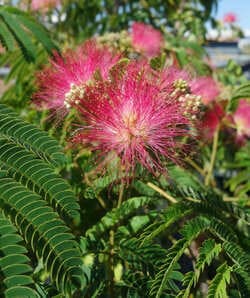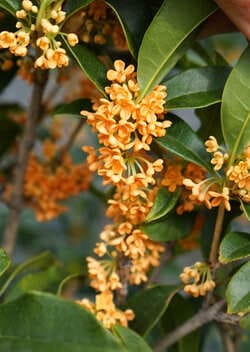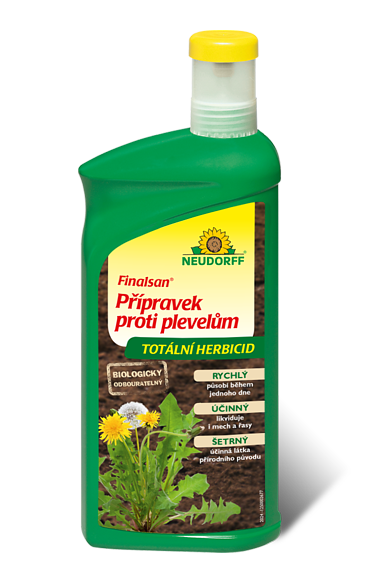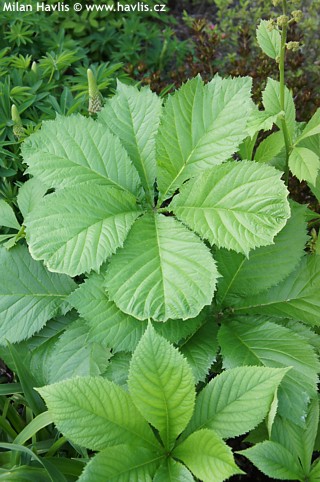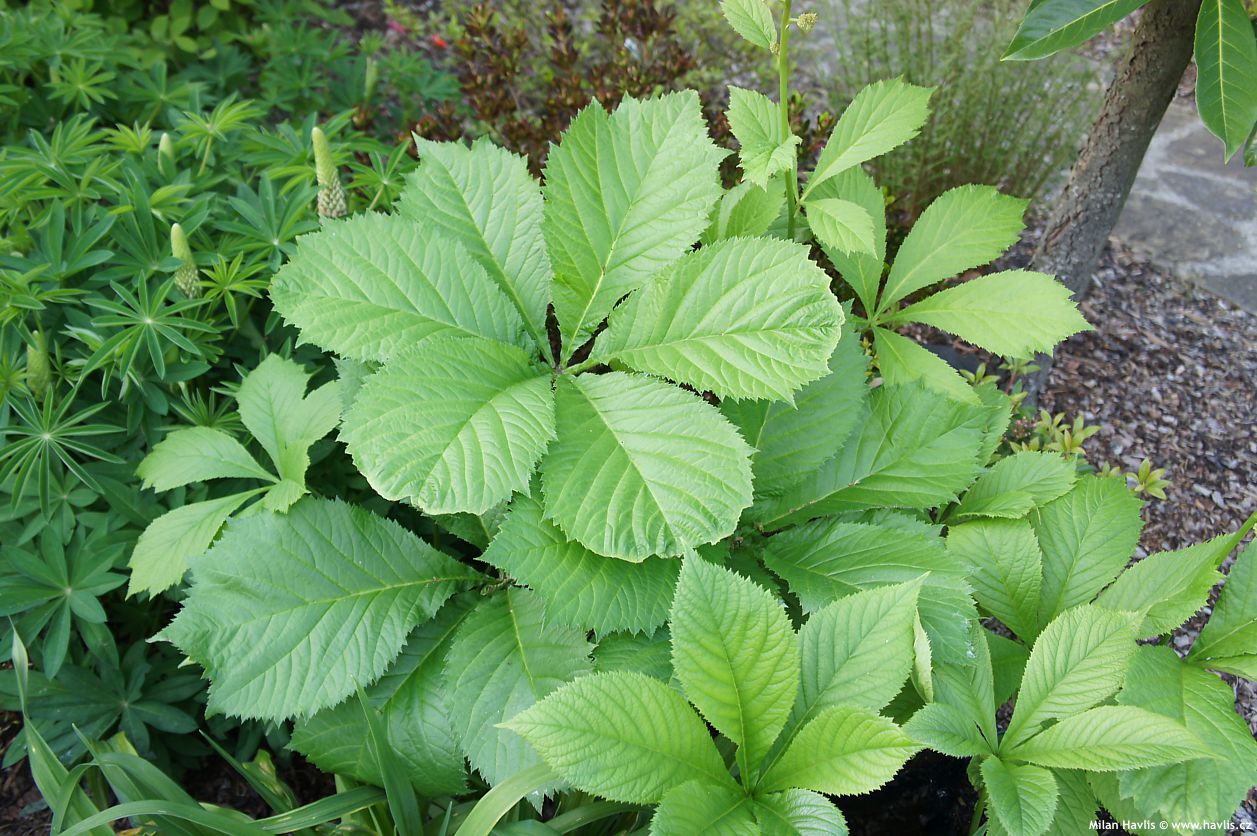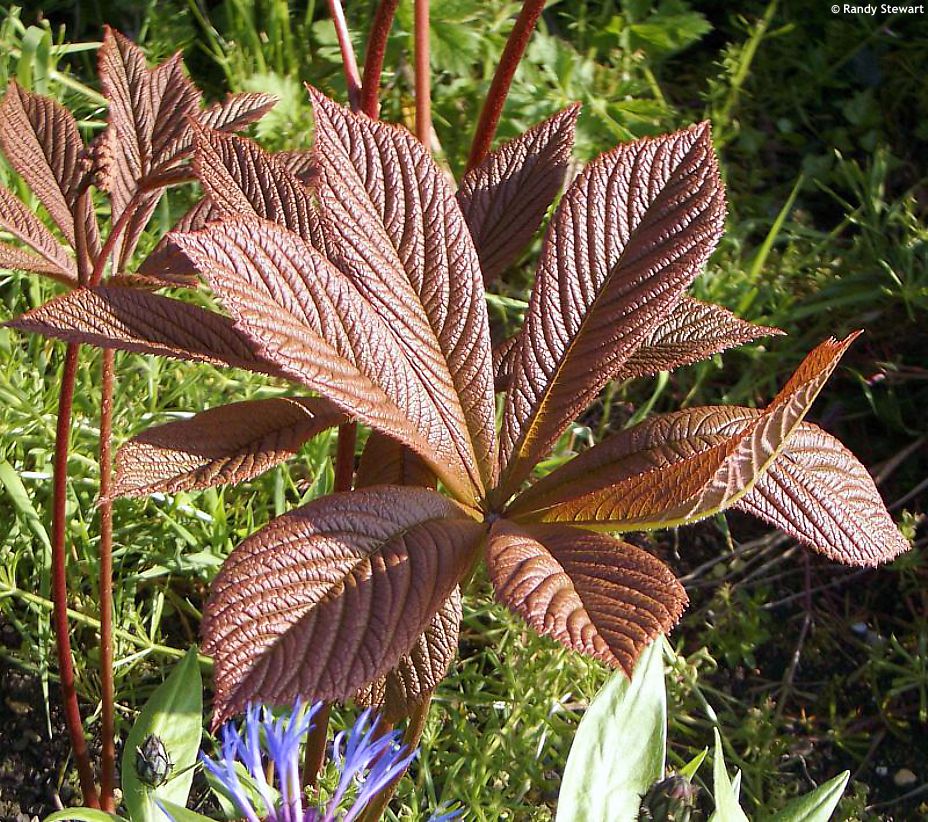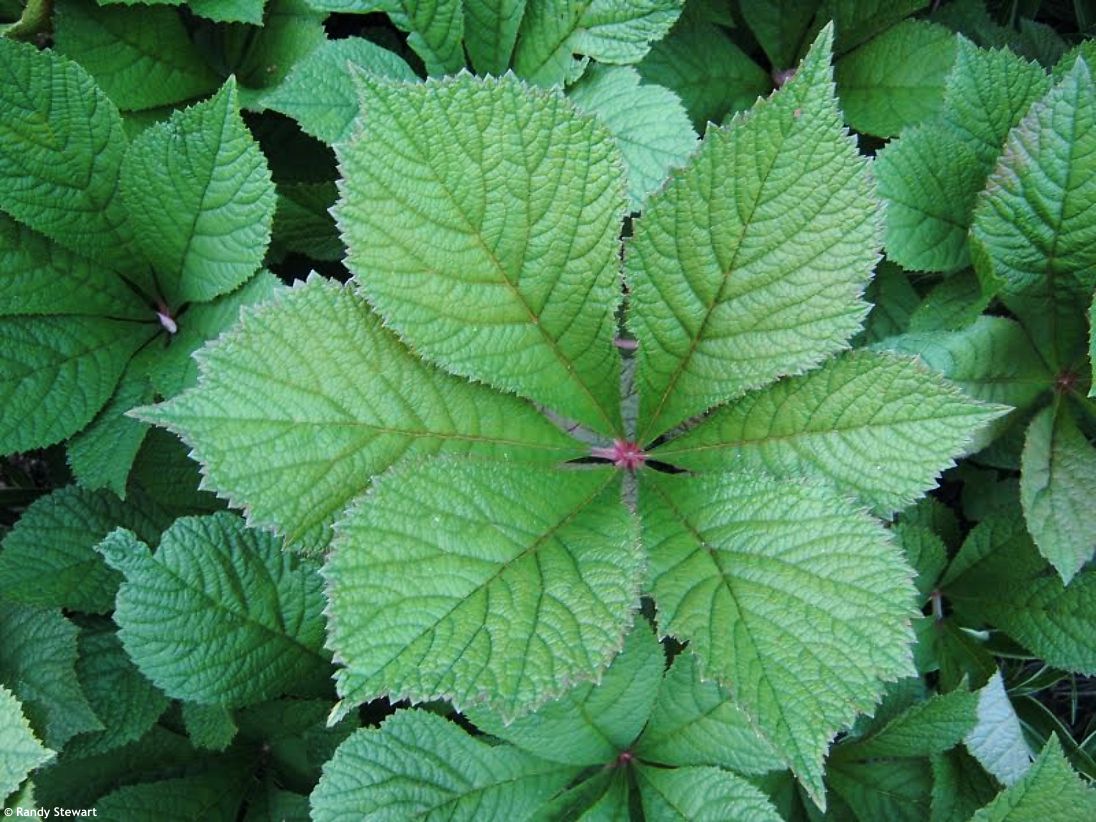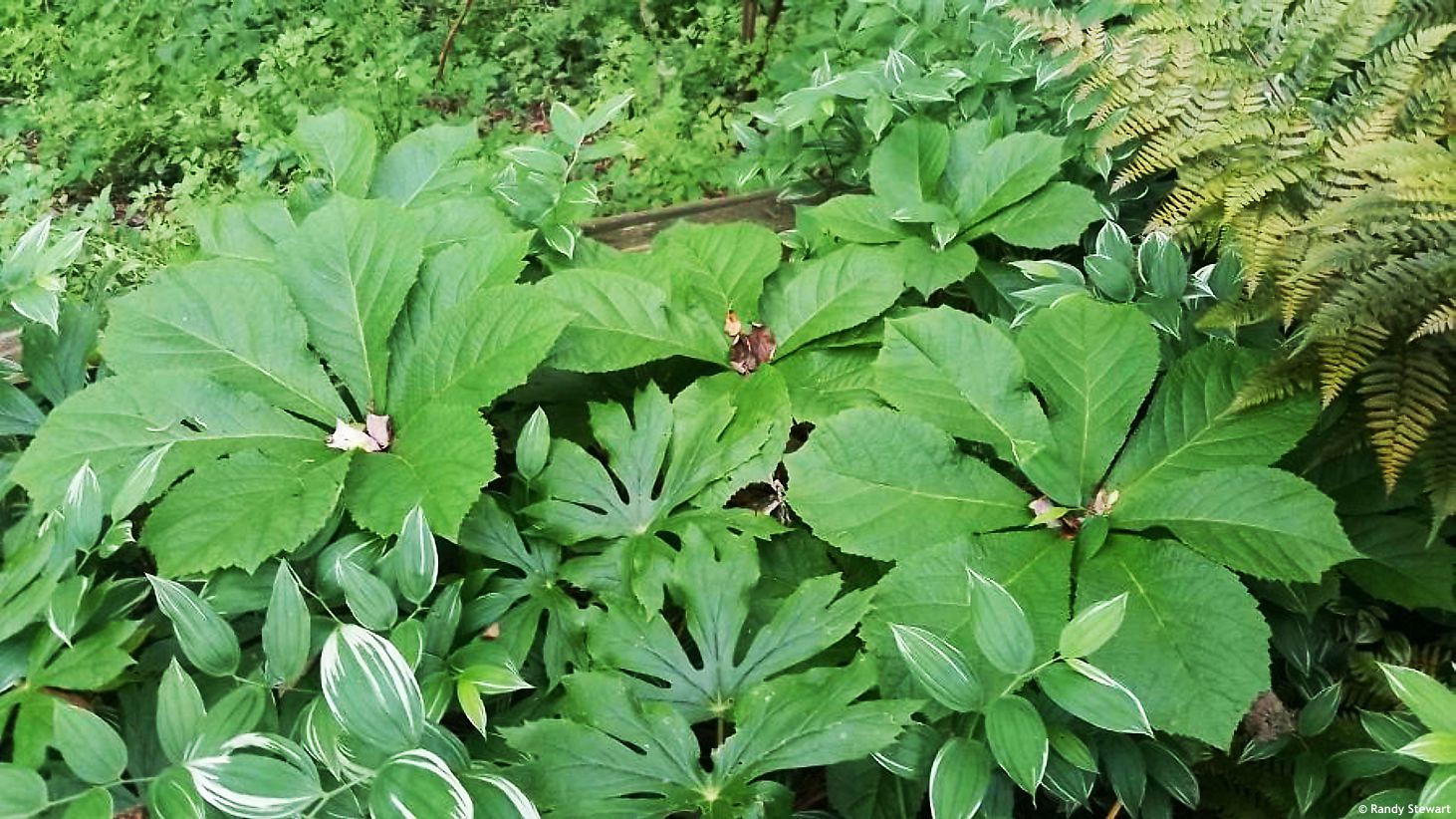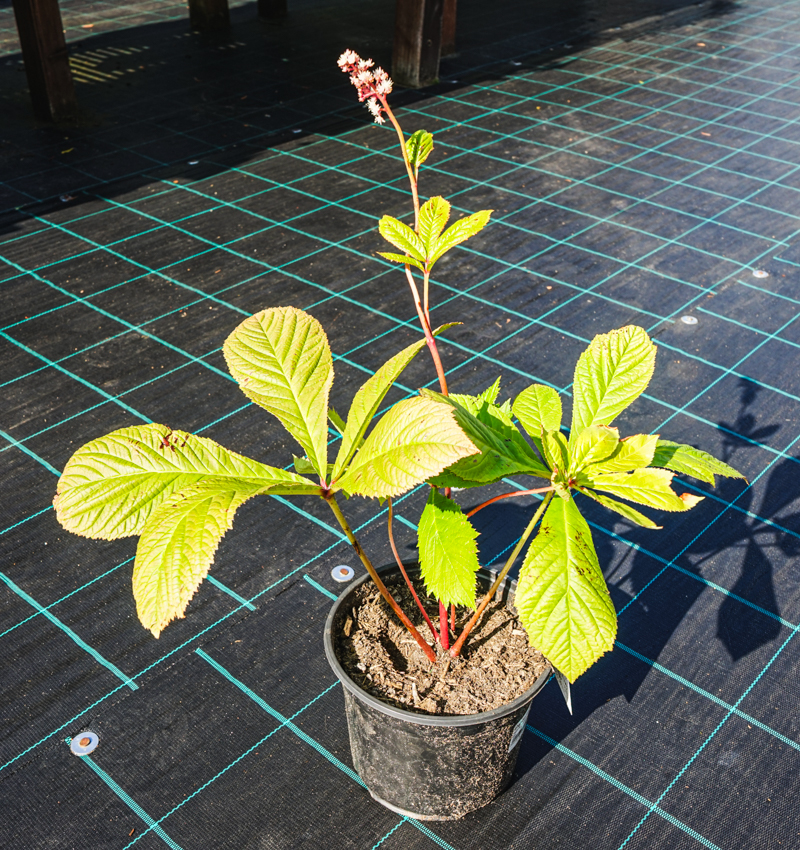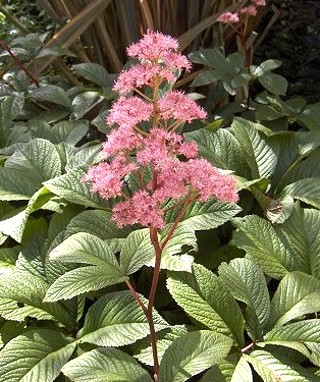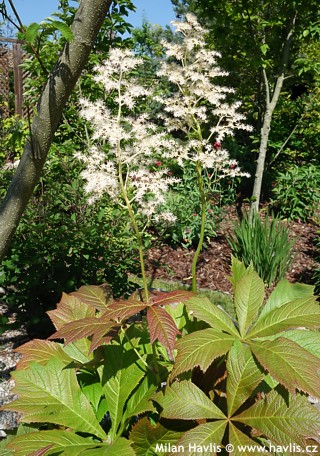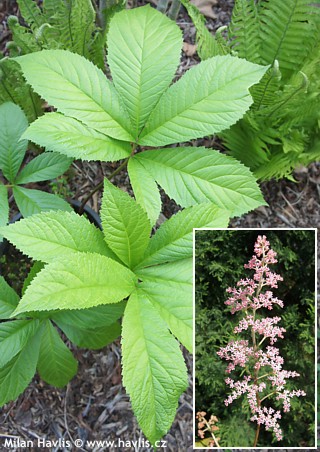Rodgersia aesculifolia chestnut-leaved rodgersia


Rodgersia
Rodgersia is a striking perennial for those who appreciate dramatic foliage and impressive stature. The genus is relatively small, comprising five main species, all characterized by bold, palmate or pinnate leaves and eye-catching panicles of flowers that lack true petals — their colour comes from sepals and stamens. Native to East Asia, particularly China, Japan, Korea, and Nepal, rodgersia was named in 1885 by American botanist Asa Gray in honour of Admiral John Rodgers, who led a Pacific expedition during which Rodgersia podophylla was discovered. Specimens reached Europe as early as the 1870s and quickly gained popularity as ornamental plants in botanical gardens. During the Victorian era, they became symbols of exoticism and wealth – planting rodgersias signaled access to botanical novelties and an interest in natural sciences. In some historic gardens, such as Wisley Garden in England, rodgersias are still grown today as part of shade-loving perennial collections, where they pair beautifully with ferns and hostas.
Described by Russian botanist Batalin, chestnut-leaved rodgersia hails from northern China and ranks among the largest representatives of the genus, reaching up to 2 meters tall under ideal conditions. Its leaves resemble those of the horse chestnut (Aesculus hippocastanum) – palmately compound with 5–7 broadly ovate leaflets, each with coarsely toothed margins radiating from a central point, giving the whole leaf a whimsical umbrella-like appearance – it can measure up to 50 cm across! Flowering occurs in summer (June to July), with delicate blossoms borne in panicles up to 60 cm long. When grown from seed, flower colour cannot be predicted in advance – they may be white, beige, pale pink, or occasionally rich rosy tones, and they carry a pleasant fragrance.
Though the blooming period is short, this species captivates through the growing season with its unusually large foliage, reminiscent of tropical rainforest plants. Thanks to this exotic look, it’s highly suited to jungle-inspired garden designs. It creates a commanding presence in the garden and is often used as a specimen plant or as a bold backdrop for more delicate perennials. In 2008, it was awarded the Award of Garden Merit by the Royal Horticultural Society (RHS) in the United Kingdom.
Rodgersia aesculifolia thrives best in shaded to semi-shaded locations. In full sun, it may suffer leaf scorch unless grown in reliably moist soil, where it can stay hydrated even during hot summers. If you’re able to keep it well-watered, sun cultivation is still possible. It is a rhizomatous perennial, forming robust clumps from thick, black underground stems that gradually expand to create ground cover without being invasive. It needs loose, fertile soil to flourish – especially to display its leaf size and abundant flowering. Avoid planting it in compacted clay or rocky ground. However, clay in the subsoil layer is beneficial as it’s rich in nutrients. Annually, treat it to fresh compost or a season-long fertilizer, and be kind enough to keep it constantly mulched – it appreciates the extra care. Fully hardy to at least −30 °C (USDA zone 5), it’s well suited for colder climates.
Last update: 09-03-2015; 31-07-2025
Goods are shipped all over Europe. For Russia and U.K. and for further details please read about SHIPPING OPTIONS HERE.
Are you interested in a serious discount for orders NOV-FEB? Check your options here.
THE PRICES INCLUDE VAT of 15%. For quick conversion you can use 1 CZK = approx. 0.04 EUR
- STANDARD QUALITY - Plants of this group are 1st class quality with number of branches and overall density adequate to their size and age, considering they were container grown.
- DE LUXE QUALITY - This label guarantees a luxurious quality of manually selected plants that, compared to their height and age, are exceptionally dense and beautiful.
- EXTRA - These plants are usually mature and bigger specimens with exceptional overall appearance.
- STANDARD (as described in the plant form) means a tree with a trunk of 190-210 cm and a crown at the top, unless specified differently. The commercial size for trees is their girth measured in the height of 1m from ground.
- HOBBY - These plants are of the same quality as our standard-quality plants but younger and therefore cheaper.
- SHRUB - a woody plant with branches growing bushy from the ground level.
- HALF-STANDARD or MINI-STANDARD - a small tree with shorter trunk, its size is usually specified.
- FEATHERED - These are trees with branches growing already from the base of the trunk and up along the stem.
- GRASSES and PERENNIALS - Sizes given usually read the diameter of the pot or the clump, as specified.












